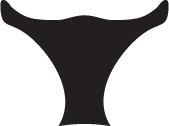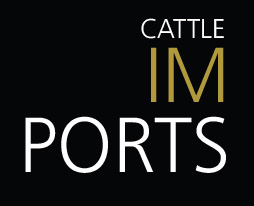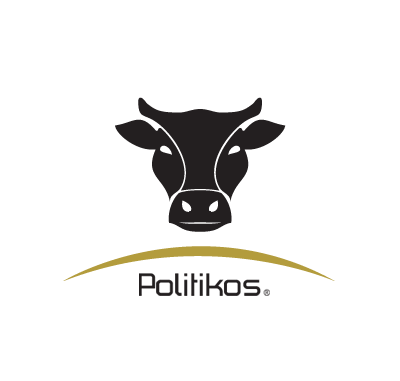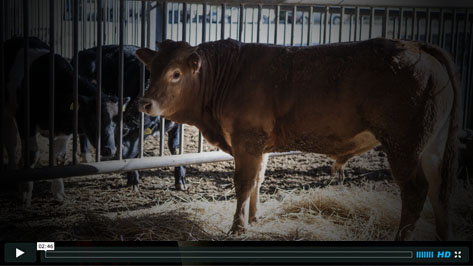








Livestock are imported from Belgium, France, Ireland, Romania, Hungary, the Czech Republic, Slovakia and Poland. The average weight of the imported animals ranges from 150 to 400 kg and their age from four to ten months. We import male calves and female breeding calves and, for the most part, we choose the animals ourselves.
All imported cattle are characterized by their excellent quality and high meat yield.

- Imports
- |
- Trade
- |
- Fattening
- |
- Distribution

A fundamental attribute of the Politikos Bros Co. is their guarantee of top quality livestock and, at the same time, their assurance of the best prices on the market. What is more, cattle deliveries are prompt and transportation costs extremely low.
Our many years of experience and superior know-ledge go a long way toward meeting all require-ments as far as breed, age, weight and quantity are concerned.

- Imports
- |
- Trade
- |
- Fattening
- |
- Distribution

Key factors in achieving high quality and yield in cattle are their nutrition and living conditions. Using top quality certified feed (corn, barley, wheat, soya, bran, corn silage, hay and clover), the Politikos Bros Company aspires not only to produce top quality meat but also to ensure the good health of its livestock.
Particular importance is attached to ensuring healthy living conditions for our animals. This is achieved by means of adequate ventilation, suf-ficient space and frequent scattering of sawdust, which helps keep the floors of the cattle sheds dry.
Furthermore, daily inspections by the company vet safeguard animal hygiene. All this contributes to optimal meat yield with live weight reaching 1600 grams per day.

- Imports
- |
- Trade
- |
- Fattening
- |
- Distribution

Products are distributed on the market in two ways:
A. By selling animals designated for slaughter in all areas of Greece.
B. By distributing meat from animals slaughtered at local slaughter houses. Moreover, in cooperation with meat cut-ting and processing plants, the Politikos Bros Company distributes processed meat of all kinds.

- Imports
- |
- Trade
- |
- Fattening
- |
- Distribution
BELGIAN BLUE
The Belgian Blue originated in Belgium. The colour of its coat is usually blue with patches of grey but it can also range from white to black. This breed has the capacity to convert the food it eats into well-developed muscle, which is why its meat is low in fat. A noteable characteristic of this breed is its rapid growth rate compared to its low feed intake.
Caracteristics
Country of origin: Belgium, Ireland
Region of origin: Ciney
Ideal slaughter weight: 750-800Kg
Meat yield: 64-66%
Meat quality: E , S

- Belgian Blue
- |
- Limousin
- |
- Charolais-Aubrac
- |
- Aubrac
- |
- Charolais
- |
- Simmental

LIMOUSIN
Limousin cattle are a breed of highly muscled beef cattle originating from the Limousin and Marche regions of France. Their colour ranges from light brown to dark golden red. Limousins have become popular because of their low birth weight (ease of calving), higher than average dressing percentage (ratio of carcass to live weight) and high yield of lean meat on the day of slaughter.
Caracteristics
Country of origin: France
Region of origin: Limousin
Ideal slaughter weight: 650-700Kg
Meat yield: 60-62%
Meat quality: E , U+.

- Belgian Blue
- |
- Limousin
- |
- Charolais-Aubrac
- |
- Aubrac
- |
- Charolais
- |
- Simmental

CHAROLAIS-AUBRAC
The Charolais-Aubrac is a very successful crossbreed between Aubrac and Charolais cattle. They are white. This success of this breed is due to the fact that crossbred calves inherit the positive elements of both parent lineages, such as resistance to disease, easy weight gain and high quality meat.
Characteristics
Country of origin: France
Region of origin: L' Aubrac
Ideal slaughter weight: 700-750Kg
Meat yield: 60-62%
Meat quality: U, E.

- Belgian Blue
- |
- Limousin
- |
- Charolais-Aubrac
- |
- Aubrac
- |
- Charolais
- |
- Simmental

AUBRAC
The Aubrac is a very old French breed of cattle used for beef, which is famous for its tasty meat. Tan in colour, with long pointed horns, Aubracs are a tough breed with high disease resistance, longevity and easy to fatten.
Characteristics
Country of origin: France
Region of origin: L' Aubrac
Ideal slaughter weight: 650-700Kg
Meat yield: 60-62%
Meat quality: E , U+.

- Belgian Blue
- |
- Limousin
- |
- Charolais-Aubrac
- |
- Aubrac
- |
- Charolais
- |
- Simmental

CHAROLAIS
Charolais cattle are named after their region of origin, specifically, Charolles, in France. This breed has a white coat. The Charolais is well-known for its large, clearly visible muscles, as well as for its capacity to retain the high quality characteristics of both parent lineages even after crossbreeding. A notable characteristic of this breed is a perfect distribution of meat and fat.
Characteristics
Country of origin: France
Region of origin: Charolles
Ideal slaughter weight: 750-800Kg
Meat yield: 58-60%
Meat quality: U , U+.

- Belgian Blue
- |
- Limousin
- |
- Charolais-Aubrac
- |
- Aubrac
- |
- Charolais
- |
- Simmental

SIMMENTAL
Simmental cattle are a versatile breed of cattle originating in the Simme River valley, in western Switzerland. The coat is typically light brown with white patches. The Simmental is a mixed yield breed, as it can be used for both meat and dairy production. Some notable characteristics of this breed include rapid growth, easy handling, high, long-term fertility and longevity.
Characteristics
Country of origin: Swiss, Roumania
Region of origin: Simmern
Ideal slaughter weight: 600-650Kg
Meat yield: 54-56%
ΠMeat quality: R , U.

- Belgian Blue
- |
- Limousin
- |
- Charolais-Aubrac
- |
- Aubrac
- |
- Charolais
- |
- Simmental

GR 59100 VERIA GREECE PO BOX189
T: +302331093000
F: +302331093581
e-mail: info@politikos.com.gr







































